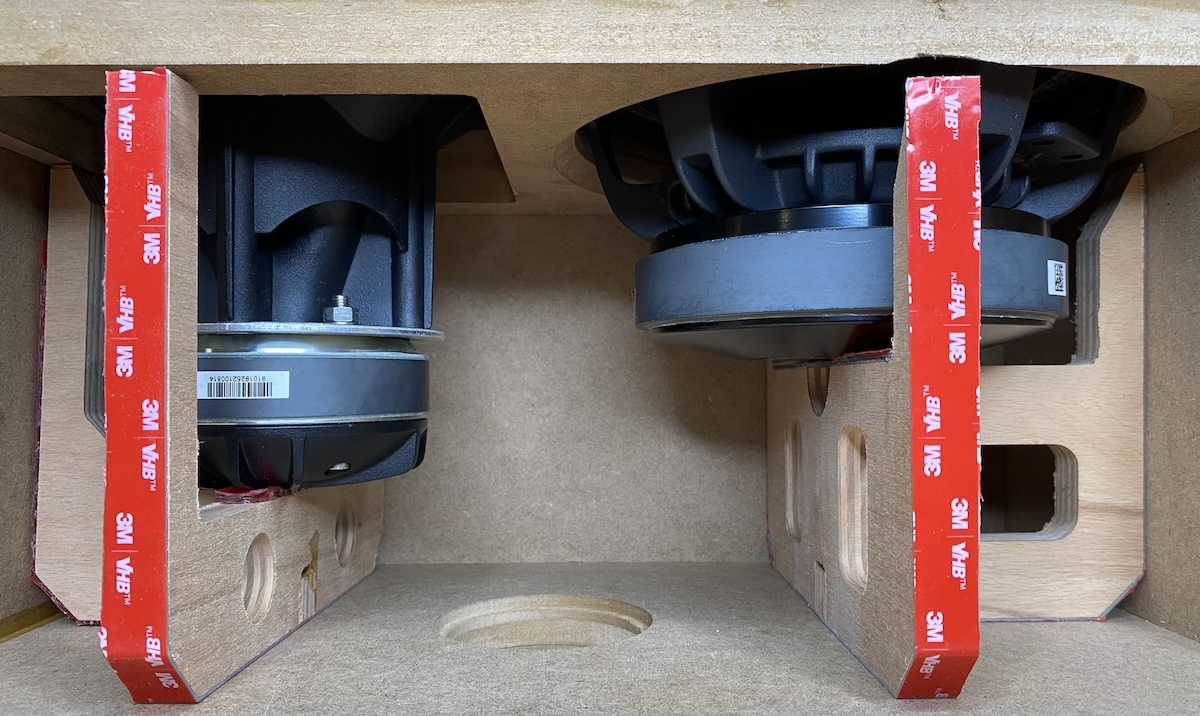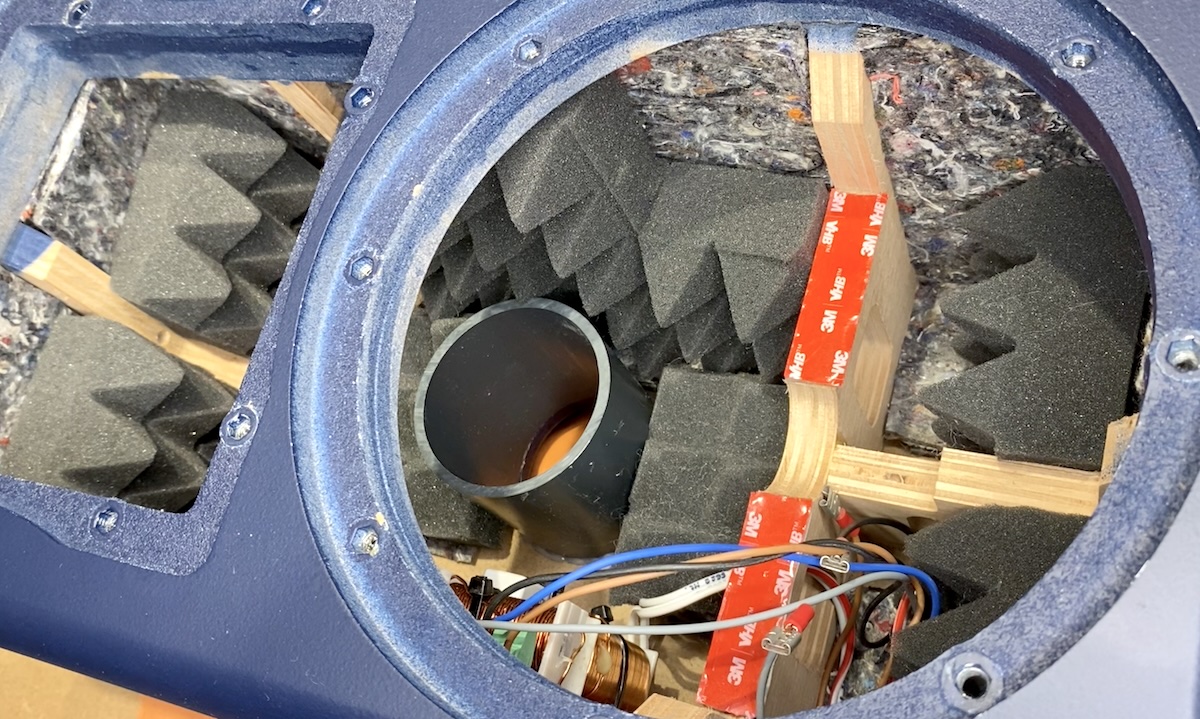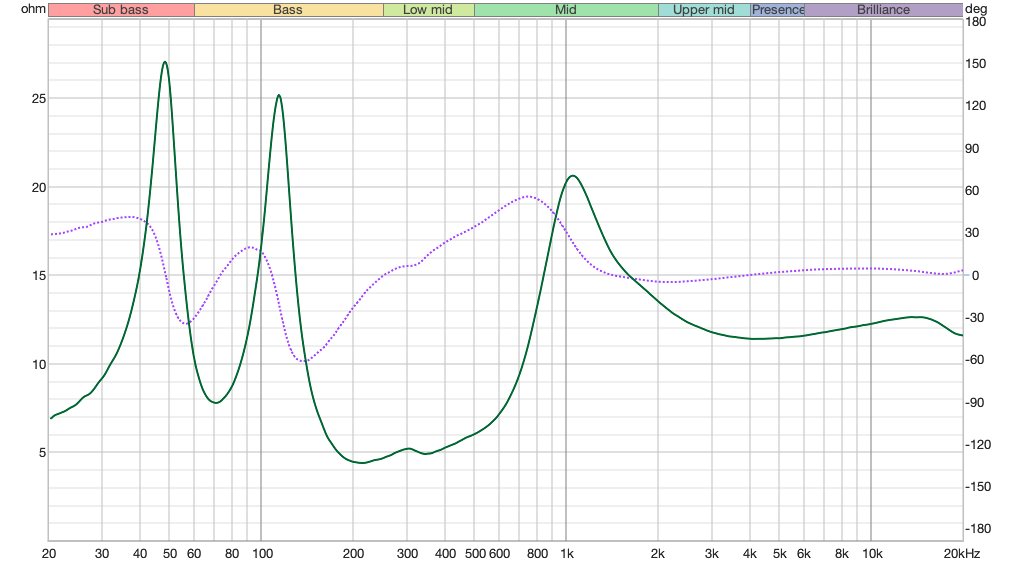Well-made hi-fi speakers sound great at low to moderate volumes, but many begin to suffer at high volume levels. Since hi-fi speakers are frequently used without a subwoofer, their designers often have to make certain trade-offs. To achieve reasonable bass, they have to use inefficient drivers that tend to distort at high volumes, assuming there is enough amplifier power before reaching that stage. Even some large floorstanding models with multiple bass drivers aren’t immune. The same applies to high-frequency drivers; many dome tweeters can’t handle high volume levels and distort noticeably.
In my opinion, music and especially home theater playback should be done at moderate to high levels to do the content justice. With subwoofers, speakers are relieved of low-bass duties and can concentrate on reproducing the rest of the frequency band. This allows the use of efficient drivers that require significantly less amplifier power to get loud. The pro-audio world has been using such drivers in their speakers for decades, and at a cinema or concert, what you are listening to is obviously not hi-fi speakers.
I previously built Valeria, a compact bookshelf speaker using pro-audio drivers, namely a 6.5" mid-bass and a 1" horn-loaded compression driver. The dynamics offered by this small speaker are impressive, if I may say so myself. It’s currently serving as the center channel in my home theater.
Lately, I’ve been thinking of building speakers with better bass response and improved horizontal and especially vertical directivity. This necessitated using an 8" mid-bass driver, a compression driver that rolls off below 1 kHz, and a horn that can control directivity better than the B&C ME10 I used in Valeria.
The mid-bass driver I selected for Valkyrie is the Lavoce WAF082.00. It has a 2" voice coil, a paper cone, and a cast-aluminum basket. The compression driver, Lavoce DF10.171K, features a 1.75" voice coil and a polyimide diaphragm. As for the horn, I decided to use the RCF HF101, a cast aluminum horn with relatively compact dimensions, which is important to minimize driver-to-driver spacing and consequently improving vertical directivity.
 8" mid-bass and 1" horn-loaded compression drivers are used.
8" mid-bass and 1" horn-loaded compression drivers are used.
Cabinet
I designed a compact cabinet with internal bracing that couples to the drivers, making the drivers part of the brace and reinforcing the front and rear sides of the cabinet.
 Valkyrie 3D model
Valkyrie 3D model
I cut the pieces with my CNC router using 18 mm (~3/4") MDF and then added 45-degree bevels to all sides on my router table. I doubled the thickness of the front baffle to make it stronger since the mid-bass driver weighs a healthy 4 kg (~9 lb).
The pieces are simple enough that they can be cut with a circular saw or jigsaw, and the holes can be cut with a handheld router. There is no need to flush mount the horn or the mid-bass driver. The bevels are optional as well.
I glued everything together using wood glue, aligning the parts with painter’s tape. I recommend using band clamps if you have some at hand.
 Gluing sides using band clamps.
Gluing sides using band clamps.
The braces were made of 16 mm beech plywood. I attached the braces to the cabinet walls with 3M VHB tape instead of regular wood glue. The soft layer in between acts as constrained-layer damping to reduce resonances.
 Dry-fitting braces.
Dry-fitting braces.
I glued the port, made from a PVC pipe (68 mm inner diameter), to the back wall with hot glue. The crossover board is installed on the side wall with standoffs.
I placed M6 threaded inserts into the front baffle so that I could remove and install the drivers as many times as needed without having to worry about stripping the holes, which is quite easy with MDF.
Crossover
 I decided to use a third-order low-pass filter with two laminated silicon steel core inductors (2.5 mH and 0.56 mH) in series and a 47 µF capacitor in parallel for the mid-bass driver.
I decided to use a third-order low-pass filter with two laminated silicon steel core inductors (2.5 mH and 0.56 mH) in series and a 47 µF capacitor in parallel for the mid-bass driver.
For the compression driver, I used a second-order high-pass filter with an 8.2 µF capacitor in series and a 2.5 mH air core inductor in parallel.
I also added an L-pad circuit with a 10 ohm resistor in series and a 4.7 ohm resistor in parallel to reduce the level of the super efficient compression driver by 12 dB on average and flatten its response.
Finally, I used two parallel notch filters, each consisting of an air core inductor, a capacitor, and a resistor in series, to further flatten the compression driver’s response. The notch filter with the lower component values is optional if a peak at 18 KHz is acceptable since there is little content in music at that frequency and many people can’t hear it anyway.
 Crossover board close-up view. The 2.5 mH air core inductor isn't pictured.
Crossover board close-up view. The 2.5 mH air core inductor isn't pictured.
Painting & Acoustic Damping
I applied 19 mm (3/4") roundovers to all sides using my router table. Then, I took the speaker outside and painted it with several coats of MDF primer using a spray gun. Once the primer had dried, I sprayed several coats of top coat (steel blue). Since I was using water-based paints, I added some paint conditioner (pouring medium) to help reduce orange peel.
 Cabinet Painted
Cabinet Painted
It’s critical to add absorption material to manage the reflections and standing waves that form inside the cabinet. I lined the walls with felt and placed extra-thick 60 mm pyramid foam on top while leaving enough space for the drivers.
 Absorption materials placed in cabinet.
Absorption materials placed in cabinet.
Finally, Valkyrie is complete, standing next to Valeria. Valkyrie’s dimensions are 24 x 42 x 21.5 cm (WxHxD), while Valeria measures 19 x 33 x 22.5 cm (WxHxD).
 Valeria next to Valkyrie.
Valeria next to Valkyrie.
Measurements
So, how is the sound? By itself, the bass is lacking, as expected. However, as soon as you add a subwoofer to the mix, the missing low-end is filled in, and what you get is effortless dynamics throughout the entire frequency range assuming the subwoofer can keep up with Valkyrie at higher volumes.
In listening tests, it’s immediately apparent that, compared to Valeria, the bass is considerably louder and deeper below 200 Hz. Otherwise, they’re well matched.
The impedance plot looks clean, with the exception of a resonance at around 300 Hz. This appears to be inherent to the mid-bass driver’s construction, as the free-air impedance measurements of the driver show it as well, albeit not as pronounced. The nominal impedance is 6 ohms dipping to 4.4 ohms at 210 Hz.
 Impedance and phase plot.
Impedance and phase plot.
The frequency response is within ±3 dB from 100 to 20,000 Hz (quasi-anechoic measurement). The mid-bass to compression driver crossover frequency is quite low at 1 kHz to help make vertical directivity well behaved. Please note that it’s not advisable to use such a low crossover frequency for this particular compression driver in a commercial setting where speakers are routinely run at their limits, but in a residential setting, it should be fine.
As for the subwoofer crossover frequency, 100 Hz looks like a good starting point. You can probably use a slightly lower crossover frequency if you place the speaker close to walls, as this will result in some bass boost from nearby boundaries. It’s also a good idea to run the subwoofer(s) a few dB hot for optimal integration.
 On-axis quasi-anechoic frequency response.
On-axis quasi-anechoic frequency response.
The horizontal directivity is ±45 degrees nominal, smooth down to 800 Hz. Below that frequency, the directivity quickly becomes omnidirectional. Thanks to the uniform directivity, the frequency response can be equalized without any issues.
 Smooth horizontal directivity (normalized).
Smooth horizontal directivity (normalized).
The vertical directivity is ±35 degrees nominal, and it’s smooth down to a respectable 1200 Hz. As long as your ears aren’t below around 15 degrees of the horn’s center axis, the timbre of the speaker shouldn’t change noticeably regardless of where you sit or stand.
 Smooth vertical directivity down to 1200 Hz (normalized).
Smooth vertical directivity down to 1200 Hz (normalized).
Finally, a complete build video is available below:
Related: